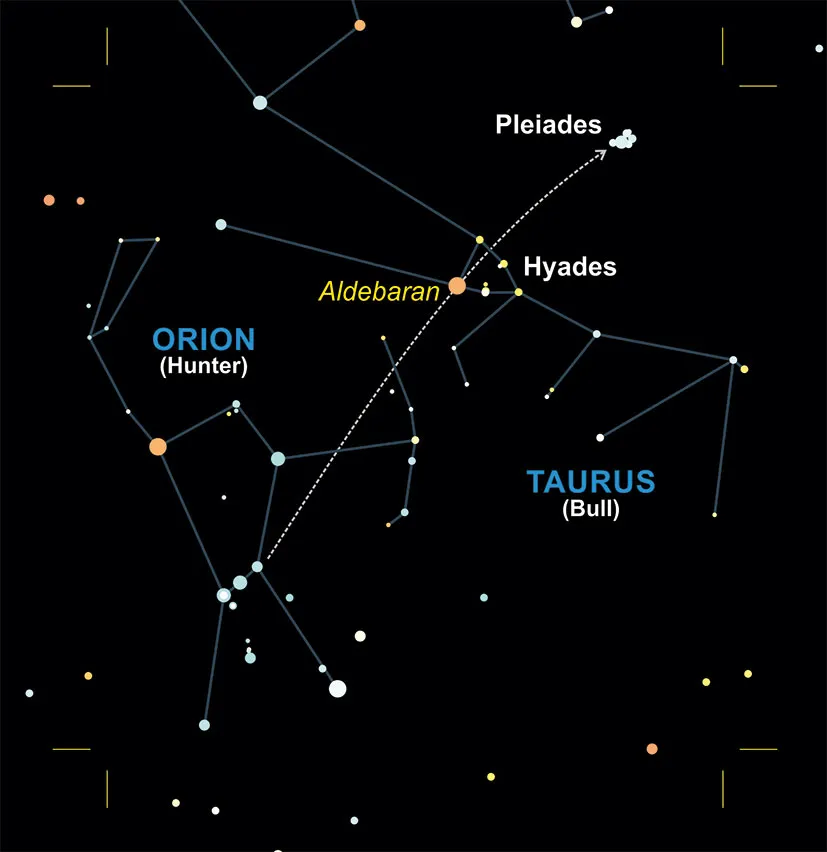Tonight is your best chance to catch sight of the Taurid meteor shower.
The Taurids may not be the most active meteor shower, but they're still worth watching. You can expect to see about 10 per hour, and if you're lucky you'll see one of the bright, orange-coloured meteors known as 'fireballs'.
But how can you see the meteor shower? What equipment will you need? And what is a meteor shower, anyway? We asked Prof Carole Mundell, head of astrophysics at University of Bath, all these questions and more. Read on to find out.
For more stargazing tips, check out our astronomy for beginnersguide and ourfull Moon UKcalendar.
When can you see the Taurids meteor shower 2021 in the UK?
The Taurids meteor shower 2021 will peak on 11-12 November for those in the UK and around the northern hemisphere, but is visible from 20 October until around 10 December.
"They'll appear to have come from the constellation of Taurus, which will rise high in the sky probably around midnight to 1:30am," says Mundell.
However, these meteors will move slowly across the sky, and you should be able to see them between midnight and 5am.
How many meteors will I be able to see in the UK?
"The projection for this year is 10 to 15 per hour," says Mundell. "So, you're not going to go and see a kind of bonfire night!"
The Taurids actually have two strings of showers, separately named the southern and northern Taurids. The southern Taurids tend to peak at the beginning of November, whereas the UK and the northern hemisphere will see the second peak around 12 November.
"The Taurids burn a yellowish orange across the sky. And in fact, the biggest fragments might even be responsible for some of the spectacular fireballs that people are increasingly seeing. These are fragments will then burn a bit more spectacularly."
How can I see the Taurids meteor shower 2021?
The Taurid meteor shower appears to come from the constellation of Taurus, which is just above Orion. Orion's belt can be spotted if you look for three shining stars quite close together – the starting point for finding the Pleiades.
"The Pleiades star cluster – the one also called The Seven Sisters – is in the Taurus constellation. It's faint, but you would know it if you saw it. Find Orion and then look above that, and that will be where the Taurids appear to come from.
"But of course, because they streak across the sky, you might see them flash other points. If you see something yellowish and orange that appears to have come from Taurus, then you have probably seen a Taurid meteor."

If you want to find this point exactly, we recommend using a stargazing app such as SkyView Lite (free on AndroidandAppledevices).
When viewing a meteor shower, it’s essential that you let your eyes adjust to the darkness beforehand. This means keeping your eyes away from any bright light (including your phone – sorry!) for at least 20 minutes.
What equipment do I need to see the meteor shower?
You don't need any special equipment to see the Taurids meteor shower, as the shooting stars should be visible to the naked eye.
"It's going to be cold, so wrap up," advises Mundell. "Go and lay on the blanket, or something like an old fashioned deck chair. The reclining back will support your neck so that you can see as much sky area as you possibly can."
What actually is a meteor shower?
A meteor shower occurs when Earth's path intersects with the path of space debris – mostly pieces of ice and sand-like material – from a comet or asteroid.
The Taurids meteor shower is the debris from a comet named Encke, which was first discovered over 200 years ago.
"These particles will actually burn up in our upper atmosphere and it's the light that's produced as they burn that we see as so-called shooting stars," explains Mundell. "They're not stars, and they're not shooting – they are fast moving dust particles that burn up as they come to us."

Mundell says that these particles are really remnants of the formation of the Solar System.
"[Seeing a meteor shower] for me has a human connection. I'm looking up and thinking, 'Wow, this is ancient dust, which we're all made of'. We're made of stardust.
"It also shows you how violent the Universe is and how much our upper atmosphere protects us. There are quite a lot of dangerous things out there in the sky, like the charged particles that come from the Sun. But we are protected from those things."
Read more:
- Heavy metals unexpectedly found in comets' atmospheres throughout the Solar System
- 12 photos of stunning weather events from the Royal Meteorological Society
About our expert, Prof Carole Mundell
Mundell is a professor of extragalactic astronomy and the head of astrophysics at the University of Bath. She studies distant objects in the Universe, including the black holes that formed from massive stars, and explosions in the Universe known as gamma-ray bursts.
